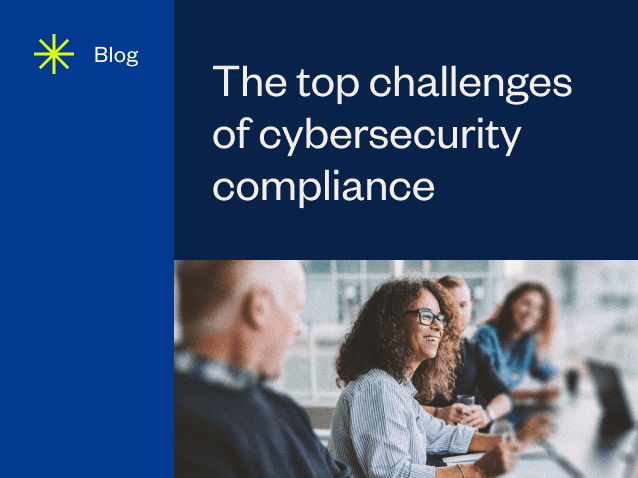The Top Challenges of Cybersecurity Compliance

Cybersecurity compliance is a competitive advantage. Cybersecurity compliance enables organizations to improve their security posture, comply with industry regulations, and to demonstrate the effectiveness of their cybersecurity controls to customers and partners.
However, despite the benefits, many organizations struggle with the challenges of their compliance program. According to A-LIGN’s 2023 Compliance Benchmark Report the greatest compliance strategy challenge is that audits are reactive, driven by customer requests versus internal management. The greatest audit process challenge is limited staff resources.
In this blog, we will share results from A-LIGN’s 2023 Compliance Benchmark Report to highlight some of the greatest challenges and provide tips for organizations that want to implement a more strategic compliance program.
The Challenge of Ad-Hoc Audits
The greatest challenge related to compliance strategy is that audits are ad-hoc and assessments are conducted at the request of customers or other stakeholders. There are several issues associated with this challenge:
- Reactive Approach: Ad-hoc audits are often conducted in response to a specific request, rather than as part of a proactive compliance program. This reactive approach can leave the organization vulnerable to compliance gaps that may not be identified until an audit is conducted.
- Lack of Consistency: Ad-hoc audits may be conducted differently each time, depending on the requirements of the customer or partner. This can lead to inconsistent audit findings and make it difficult to identify trends or patterns in compliance reports.
- Resource-intensive: Ad-hoc audits can be resource-intensive, as they require the organization to divert staff and resources to meet the requirements of each audit request. Frequently, this results in the duplication of work (such as collecting evidence). This can be a burden on the organization, especially if they are receiving multiple audit requests, but managing them individually.
Other challenges related to compliance strategy include the difficulty keeping up with new compliance requirements and the lack of a coherent compliance strategy entirely. When you consider these issues, it is clear that organizations would benefit by implementing a more strategic compliance program that proactively pursues and consolidates audits.
The Challenge of Limited Resources
When it comes to the specific challenges of the audit process, the greatest challenge for most organizations is limited staff resources dedicated to compliance. Organizations with limited resources will compound the challenge of conducting ad-hoc audits (and the issues associated with them). Additional issues related to limited staff resources include:
- Incomplete or inadequate assessments: With limited staff resources, auditors may not be able to conduct comprehensive assessments. This can result in incomplete or inadequate assessments that leave an organization without compliance certification.
- High turnover: Limited staff resources can result in high turnover, as employees may find themselves overworked or burnt out. This can create gaps in compliance expertise and result in a loss of institutional knowledge.
- Missed regulatory deadlines: When new regulatory compliance mandates emerge, a lack of staff resources may result in missed deadlines and compliance failures.
If an organization has limited resources dedicated to their audit process, then it is a strong indication that their cybersecurity program is lacking, which in turn makes them more likely to fall victim to a cyberattack.
Another major challenge for the audit process is the complexity of conducting multiple audits. Many organizations are subject to multiple compliance frameworks or regulations, each with their own specific requirements and reporting standards. Conducting audits across multiple frameworks can be complex and time-consuming, requiring significant staff resources and coordination.
To effectively manage these challenges, organizations should once again consider streamlining their audit process by identifying areas of overlap to reduce duplication of efforts or investing in audit technology that automates compliance management. And of course, choosing the right audit service provider can go a long way in alleviating limited staff resources and the complexity of conducting multiple audits.
Overcoming Challenges with Strategic Compliance
The challenges associated with cybersecurity compliance can be significant, particularly when it comes to conducting audits and managing the overall compliance process. However, by streamlining compliance frameworks and leveraging automated compliance management platforms, organizations can take steps to address these challenges and improve their compliance posture.
Consolidating audits and automating compliance processes can help reduce duplication, improve efficiency, and ensure that compliance requirements are being met consistently across the organization. Ultimately, investing in these strategies can help organizations to stay ahead of emerging threats and protect their sensitive data and systems against cyberattacks.
Learn more about the most common cybersecurity compliance challenges and best practices for strategic compliance — Read A-LIGN’s 2023 Compliance Benchmark Report.
